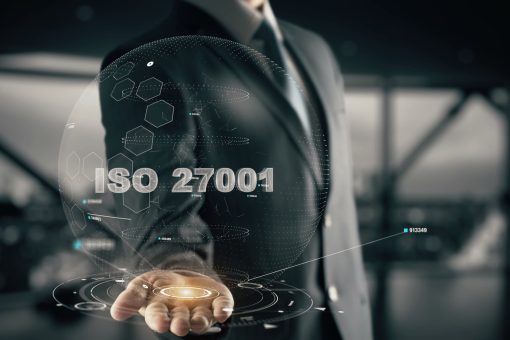8 Top Tips for avoiding, eliminating and reducing background noise when making recordings for transcription, written by the technical team at www.universitytranscriptions.co.uk.
- Check out the room you will be using to make the recording in prior to the event itself. Some years ago we undertook a recording of a group of students at a university to put together some training videos on careers in the legal profession. We hired a room at a university and turned up on the day expecting to be in some fairly swanky conference facilities, but discovered when we got there that the room was in a lot of medium sized seminar rooms and we were surrounded by art students. In one room we had a video playing, in a second room we had a music group, and in the third room we had some actors performing in a rehearsal. In the middle of this we were trying to record a group of students listening to talks, taking part in workshops and mock interviews. The background noise was pretty awful from all sides and we spent most of the day going into each room asking the various groups to be quiet so we could get the recording completed. Although this is an extreme, we do come across recordings all the time where the person undertaking the recording hasn’t really thought out the implications of recording someone sat outside a busy cafe next to a main road.
- Think about the acoustics of the room. Transcription is made much harder if the transcriber is listening to three voices every time anybody speaks because you have undertaken the recording in a room the size of a church and there is a terrible echo. This is also the same if you have an open window in the room with a busy road next door. For the length of the recording it may be better to be too hot than to miss most of the recording with “undecipherable” in your transcription once it is complete.
- Take particular care with telephone recordings – there is specialist software for recording telephone conversations, as well as a range of apps on smart phones. For recording telephone conversations via analogue/digital phones on a conventional phone line you can actually purchase a microphone with a sucker on that connects to your mouthpiece, and this is quite an effective way of making the recording. Search online for these – we have found they are relatively inexpensive.
- Position the recording device equidistant from all participants. So many times we have found this and we have also written about it on numerous occasions, but if you put the recording device next to one person and a long distance away from another, the transcriber will struggle to pick up one of the voices and have full clarity on the other. Not only can this result in things being missed, it can also result in a false impression being given from the typed version of your recording, because if the two voices speak at the same time the one closest to the microphone will be picked up, and the one furthest away will be overlooked.
- Make sure the recording device is not too far away from all speakers. By this we mean do not place the recording device on one side of the room and then all sit on the other side. This may seem pretty logical, but say there is a power supply on one side of the room but the comfortable chairs are round the other side and you need to plug in your recording device, whether this is a Smartphone or a digital recorder, then forsake the comfort of the chairs and move closer to the recording device! It is surprising how much background noise will get on to your recording the further away the recording device is.
- Check out any heating or cooling devices in the room. Whirring is a particular issue as background noise, and so easily reduced if you check this out before commencing your recording. Air conditioning units can make an atrocious noise in the background of a recording and for the purposes of 30 to 35 minutes worth of being quite warm, it can be worth considering just switching it off if you are able.
- Recording in cafes can be difficult but not impossible if you follow this simple guide. Make sure that when each speaker is saying something, you position the recording device right next to them to pick up exactly what they say. If you do this you will eliminate the background noise to a certain extent, because the voice of the person speaking will override the noise in the background. Cafes can be unbearably noisy at times and cause all kinds of problems for the transcriber when it comes to picking up individual words. Be very conscious of this and try to speak more clearly and slowly than you would in ordinary conversation if this is possible.
- Covert recordings can reduce background noise by making sure the recording device is close to the participants. We can use specialist software to take out certain frequencies of the recording if you have been recording something covertly, or without the person’s consent at the time but later with consent if the covert recording is for harmless purposes. It is difficult to reduce all background noise in these circumstances because by the very nature of the recording being covert, it does mean that the recording device is not going to be put closely up to the speaker’s mouth or near their body. However if you have the recorder in a bag or in your pocket, try to get as close as you can to the person you are trying to record as again it will eliminate a lot of the background noise. Be aware that if you have a recording device in your pocket and you move about, the recording device will pick up the noises of the fabric of your clothes as you move about. A small microphone extension is definitely worth considering if the covert recording is important, or you are able to plan it in advance.
These are our top tips for reducing background noise in recordings. Specialist transcription companies, particularly those used to undertaking academic research projects of larger size, have invested over the years in background noise elimination software and tptranscription.co.uk and universitytranscriptions.co.uk are able to assist in transcribing particularly difficult recordings. Furthermore, for standard recordings and extensive background noise we do not charge any extra, even if the recording is particularly difficult to hear. So do not worry if you get some background noise on your recording, as we can still transcribe it. There may be gaps where the transcriptionist indicates that words are undecipherable, but if you have followed the tips above hopefully these will be low in number.







